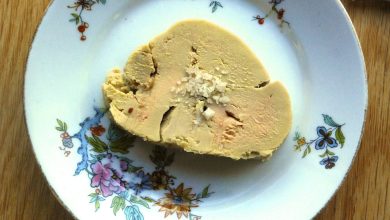Salami (Cooked Beef) – Nutritional Information
Salami made from cooked beef is a flavorful and savory ingredient often used in a variety of dishes, from sandwiches to charcuterie boards. Here is a detailed breakdown of its nutritional profile, highlighting its key vitamins and minerals, along with its energy content and macronutrients:
Nutritional Facts (Per 100g Serving)
- Energy: 261 kcal
- Protein: 12.6 g
- Fat: 22.2 g
- Saturated Fats: 9.9 g
- Carbohydrates: 1.9 g
- Sugars: 1.5 g
- Fiber: 0.0 g
Minerals and Micronutrients
- Calcium: 6.0 mg
- Iron: 2.2 mg
- Magnesium: 13.0 mg
- Phosphorus: 205.0 mg
- Potassium: 188.0 mg
- Sodium: 1140.0 mg
- Zinc: 1.77 mg
- Copper: 0.19 mcg
- Manganese: 0.046 mg
- Selenium: 14.6 mcg
Vitamins
- Vitamin C: 0.0 mg
- Thiamine (B1): 0.103 mg
- Riboflavin (B2): 0.189 mg
- Niacin (B3): 3.24 mg
- Vitamin B6: 0.18 mg
- Folate (B9): 2.0 mcg
- Vitamin B12: 3.06 mcg
- Vitamin A: 0.0 mcg
- Vitamin E: 0.19 mg
- Vitamin D2: 1.2 mcg
Allergen Information
Salami made from cooked beef is generally free from common allergens like gluten, dairy, and nuts. However, it may contain traces of preservatives, nitrates, or spices like garlic or pepper, which could be problematic for individuals with specific sensitivities. Always check the label for any added ingredients that may pose potential allergens.
Dietary Preferences
Salami is a high-protein, high-fat food that is typically enjoyed by those following a low-carb or keto diet. However, it is also relatively high in sodium and saturated fats, making it a food best consumed in moderation, especially for individuals with hypertension or those monitoring their fat intake.
Cooking and Serving Suggestions
Salami can be enjoyed in various ways, whether it’s sliced thinly for sandwiches, chopped into salads, or served as part of a charcuterie platter. Its rich flavor pairs well with cheeses, olives, pickles, and crusty bread. For a more substantial meal, salami can be incorporated into pasta dishes, pizzas, or even used to complement scrambled eggs or an omelette.
Conclusion
Salami made from cooked beef is a rich and flavorful addition to many meals. While it provides a good source of protein, it is also high in fats and sodium, so it should be consumed in moderation, especially for those with specific dietary concerns. For anyone looking to add a savory element to their dishes, salami offers a delicious and versatile option. Always check labels for added ingredients or preservatives that might impact dietary choices or health conditions.










